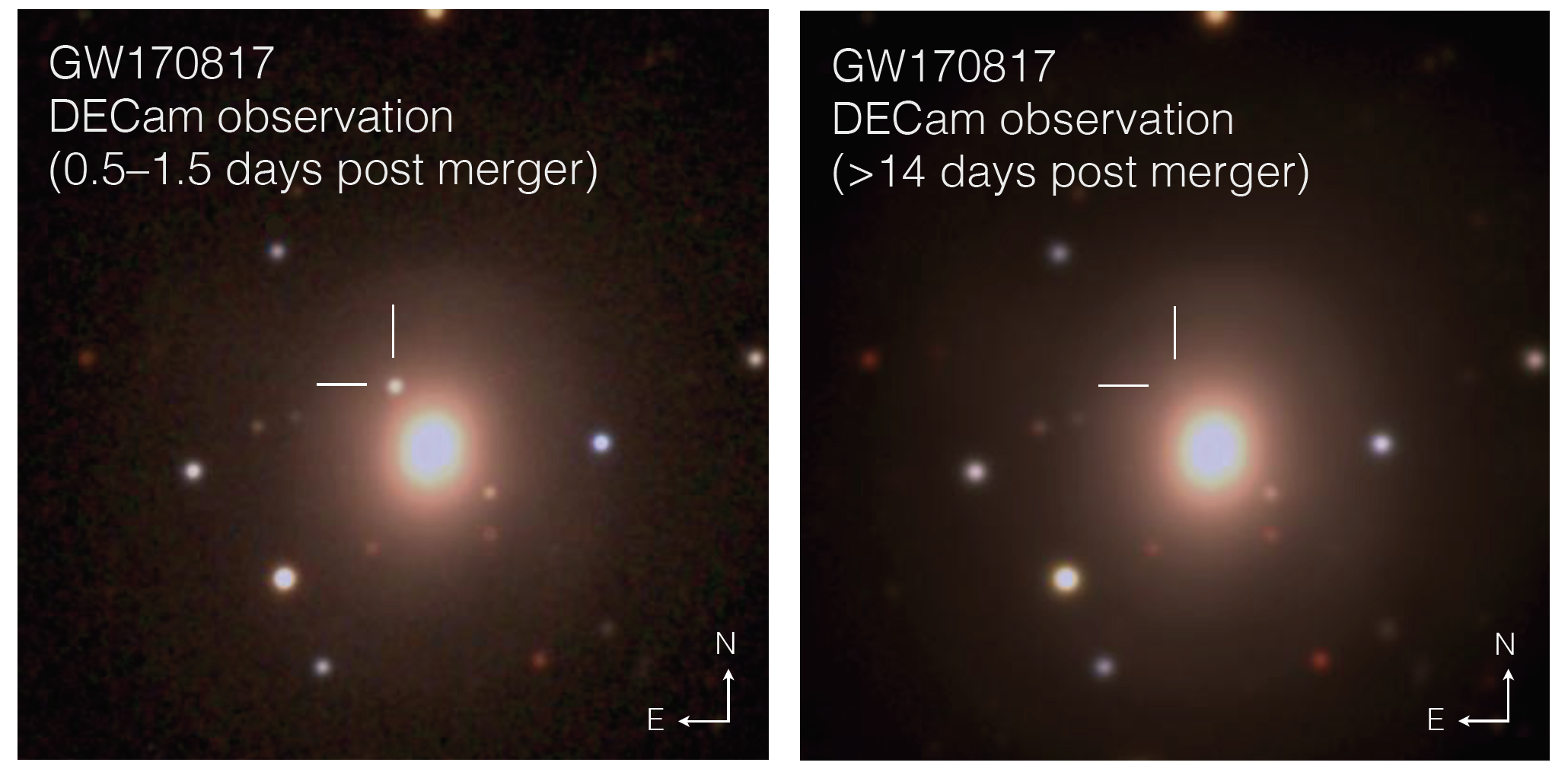
NGC 4993 grz color composites, revealing a quickly fading transient.
Due to the nature of gravitational wave detections, aLIGO is not able to precisely pinpoint the source of a gravitational wave on the sky. By combining the data from multiple geographically separated detectors, a given gravitational wave can be localized to a much smaller region. This region, however, is typically still very large. Searches for optical counterparts are therefore particularly challenging.
In this paper, we present the Dark Energy Camera (DECam) discovery of the optical counterpart of the first binary neutron star merger detected through gravitational wave emission, GW170817. Our DECam observations covered 81% of the GW170817 localization region within just eleven hours of the gravitational wave detection! After processing the DECam images, we discovered a new source near the galaxy NGC 4993. We do not find any other credible optical counterparts, and therefore conclude that the optical counterpart near NGC 4993 is associated with GW170817. This discovery ushers in the era of multi-messenger astronomy with gravitational waves, and demonstrates the enormous power and importance of DECam for optical follow-up of gravitational wave sources.
- Citation: 2017 ApJL 848 L16
- DOI: 10.3847/2041-8213/aa9059
- ArXiv: 1710.05459